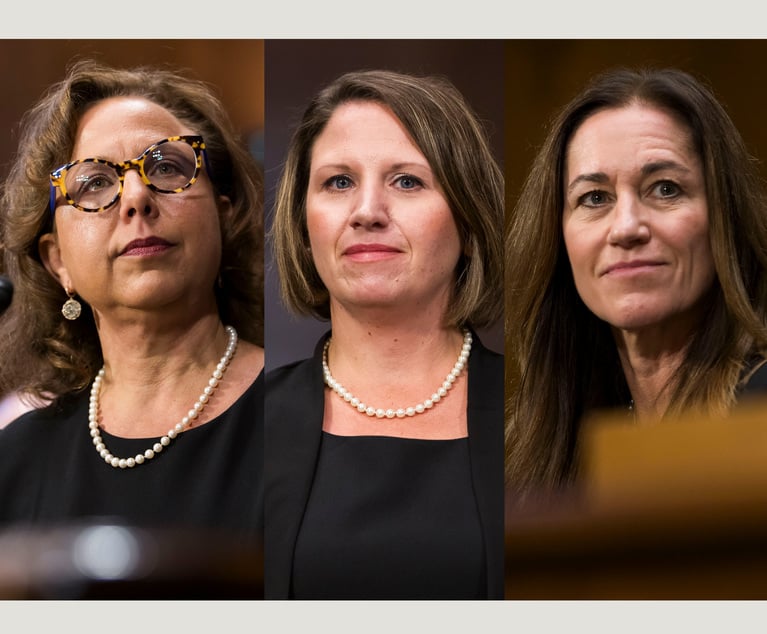 Michael E. Bertin partner with Obermayer Rebmann Maxwell & Hippel.
Michael E. Bertin partner with Obermayer Rebmann Maxwell & Hippel. Treatment of 529 Account in Divorce Settlement Agreement
An increasingly common issue faced by divorcing spouses, as well as family law attorneys, is the treatment and disposition of custodial accounts and 529 accounts for the parties' children.
August 17, 2020 at 01:22 PM
8 minute read
An increasingly common issue faced by divorcing spouses, as well as family law attorneys, is the treatment and disposition of custodial accounts and 529 accounts for the parties' children. Questions arise as to how the accounts will be distributed and what will happen to the accounts after the parties divorce. In the recent case of Brooks v. Brooks, __ A.3d __, 2020 PA Super. 66 (March 16, 2020), the Pennsylvania Superior Court addressed the issue of 529 accounts and custodial accounts in relation to marital settlement agreements.
The pertinent facts of the Brooks matter are as follows: David Brooks (the husband) and Gail Brooks (the wife) entered into a marital settlement agreement. Contained in the agreement was the treatment of 10 college savings accounts established by the parties for their three children. Seven of the accounts "were created in accordance with the Pennsylvania Uniform Transfers to Minors Act (PUTMA accounts) and the other three are qualified tuition plans established pursuant to 26 U.S.C. Section 529 (529 accounts)." The marital settlement agreement provided: "As the custodian of these college savings accounts, in strict accordance with all applicable laws/regulations governing 'custodial accounts', in a fiduciary capacity, the husband shall have the right to manage the college savings accounts in his best, good faith, financial discretion." According to the opinion, the husband also agreed to supply the wife with complete account statements no later than Jan. 15 and July 15 of each year that the accounts existed.
This content has been archived. It is available through our partners, LexisNexis® and Bloomberg Law.
To view this content, please continue to their sites.
Not a Lexis Subscriber?
Subscribe Now
Not a Bloomberg Law Subscriber?
Subscribe Now
NOT FOR REPRINT
© 2025 ALM Global, LLC, All Rights Reserved. Request academic re-use from www.copyright.com. All other uses, submit a request to [email protected]. For more information visit Asset & Logo Licensing.
You Might Like
View All
Pa. Federal District Courts Reach Full Complement Following Latest Confirmation

The Defense Bar Is Feeling the Strain: Busy Med Mal Trial Schedules Might Be Phila.'s 'New Normal'
7 minute read
Federal Judge Allows Elderly Woman's Consumer Protection Suit to Proceed Against Citizens Bank
5 minute read
Judge Leaves Statute of Limitations Question in Injury Crash Suit for a Jury
4 minute readLaw Firms Mentioned
Trending Stories
- 1Pa. High Court to Decide Whether Flight in a High Crime Area Can Result in an Investigative Stop
- 2EB-5 Immigration Investor Program: a Win-Win Program, or Is It?
- 3People in the News—Feb. 6, 2025—Unruh Turner, Fox Rothschild
- 4‘Listen, Listen, Listen’: Practice Tips From Judges in the Oakland Federal Courthouse
- 5Gertrude Stein Is Right On Again
Who Got The Work
J. Brugh Lower of Gibbons has entered an appearance for industrial equipment supplier Devco Corporation in a pending trademark infringement lawsuit. The suit, accusing the defendant of selling knock-off Graco products, was filed Dec. 18 in New Jersey District Court by Rivkin Radler on behalf of Graco Inc. and Graco Minnesota. The case, assigned to U.S. District Judge Zahid N. Quraishi, is 3:24-cv-11294, Graco Inc. et al v. Devco Corporation.
Who Got The Work
Rebecca Maller-Stein and Kent A. Yalowitz of Arnold & Porter Kaye Scholer have entered their appearances for Hanaco Venture Capital and its executives, Lior Prosor and David Frankel, in a pending securities lawsuit. The action, filed on Dec. 24 in New York Southern District Court by Zell, Aron & Co. on behalf of Goldeneye Advisors, accuses the defendants of negligently and fraudulently managing the plaintiff's $1 million investment. The case, assigned to U.S. District Judge Vernon S. Broderick, is 1:24-cv-09918, Goldeneye Advisors, LLC v. Hanaco Venture Capital, Ltd. et al.
Who Got The Work
Attorneys from A&O Shearman has stepped in as defense counsel for Toronto-Dominion Bank and other defendants in a pending securities class action. The suit, filed Dec. 11 in New York Southern District Court by Bleichmar Fonti & Auld, accuses the defendants of concealing the bank's 'pervasive' deficiencies in regards to its compliance with the Bank Secrecy Act and the quality of its anti-money laundering controls. The case, assigned to U.S. District Judge Arun Subramanian, is 1:24-cv-09445, Gonzalez v. The Toronto-Dominion Bank et al.
Who Got The Work
Crown Castle International, a Pennsylvania company providing shared communications infrastructure, has turned to Luke D. Wolf of Gordon Rees Scully Mansukhani to fend off a pending breach-of-contract lawsuit. The court action, filed Nov. 25 in Michigan Eastern District Court by Hooper Hathaway PC on behalf of The Town Residences LLC, accuses Crown Castle of failing to transfer approximately $30,000 in utility payments from T-Mobile in breach of a roof-top lease and assignment agreement. The case, assigned to U.S. District Judge Susan K. Declercq, is 2:24-cv-13131, The Town Residences LLC v. T-Mobile US, Inc. et al.
Who Got The Work
Wilfred P. Coronato and Daniel M. Schwartz of McCarter & English have stepped in as defense counsel to Electrolux Home Products Inc. in a pending product liability lawsuit. The court action, filed Nov. 26 in New York Eastern District Court by Poulos Lopiccolo PC and Nagel Rice LLP on behalf of David Stern, alleges that the defendant's refrigerators’ drawers and shelving repeatedly break and fall apart within months after purchase. The case, assigned to U.S. District Judge Joan M. Azrack, is 2:24-cv-08204, Stern v. Electrolux Home Products, Inc.
Featured Firms
Law Offices of Gary Martin Hays & Associates, P.C.
(470) 294-1674
Law Offices of Mark E. Salomone
(857) 444-6468
Smith & Hassler
(713) 739-1250





